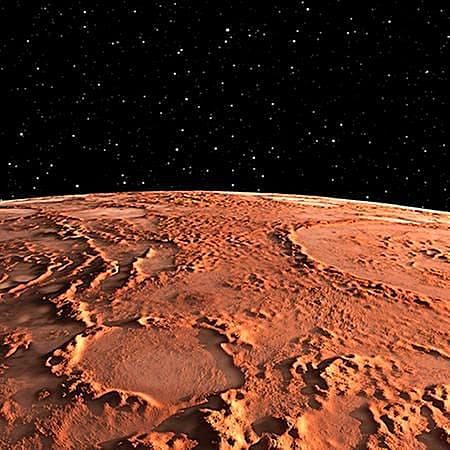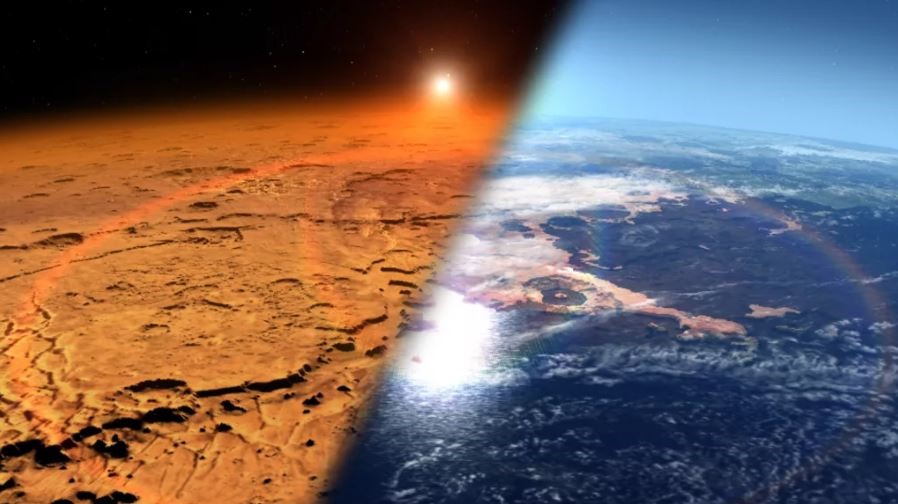In a groundbreaking discovery, Japanese scientists have unveiled how life on Mars may have originated parallel to life on Earth.
Nestled within the “Goldilocks zone” of the Solar System alongside Venus and Earth, boasting oceans and some living conditions… yet Mars has always remained enigmatic, seemingly lacking the elements to “ignite” a world of organisms.

Now, a research team from Tohoku University in Japan has unearthed what they dub as a “glimmer of life,” according to Sci-Tech Daily.
Primitive Mars may have given birth to life-building materials right in its atmosphere. Primitive Mars may have given birth to life-building materials right in its atmosphere.
To achieve this, scientists utilized computer models based on available data about Mars to investigate whether the initial atmospheric conditions of the planet could have promoted the formation of organic compounds.

Published in the scientific journal Scientific Reports, they noted that today, while Mars is dry and extremely cold, it had a “friendly” past around 3.8 – 3.6 billion years ago. During this time, Mars had a mild climate sustained by the warming properties of gases like hydrogen. It was also when the planet had water, contained in rivers, lakes, oceans that NASA has found traces of.
Model experiments showed that under those conditions, the diminishing atmosphere of hydrogen, carbon dioxide, and carbon monoxide could produce formaldehyde. It’s a simple organic compound that plays a crucial role as a precursor to the formation of important biological molecules like amino acids and sugars.

The new simulations reveal that the ancient Martian atmosphere generated formaldehyde in large, continuous quantities during two early geological epochs of the planet.

Thus, Mars might have possessed the building blocks of life itself thanks to the miraculous reactions in its atmosphere.
The study not only provides evidence of the potential for life to exist on ancient Mars but also offers a mechanism for life to emerge on a planet born within the Goldilocks zones of star systems.
Furthermore, there’s another widely accepted theory about the origin of life: that it was brought about by small celestial bodies like asteroids and comets containing organic materials.
However it occurred, this demonstrates that life in the universe may have numerous ways of coming into existence. And, almost certainly, we are not alone in the cosmos.

